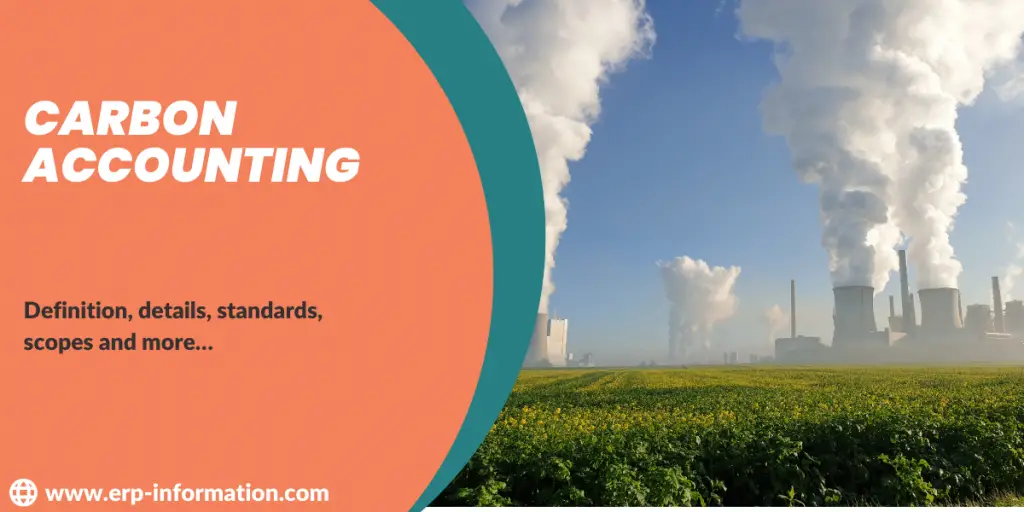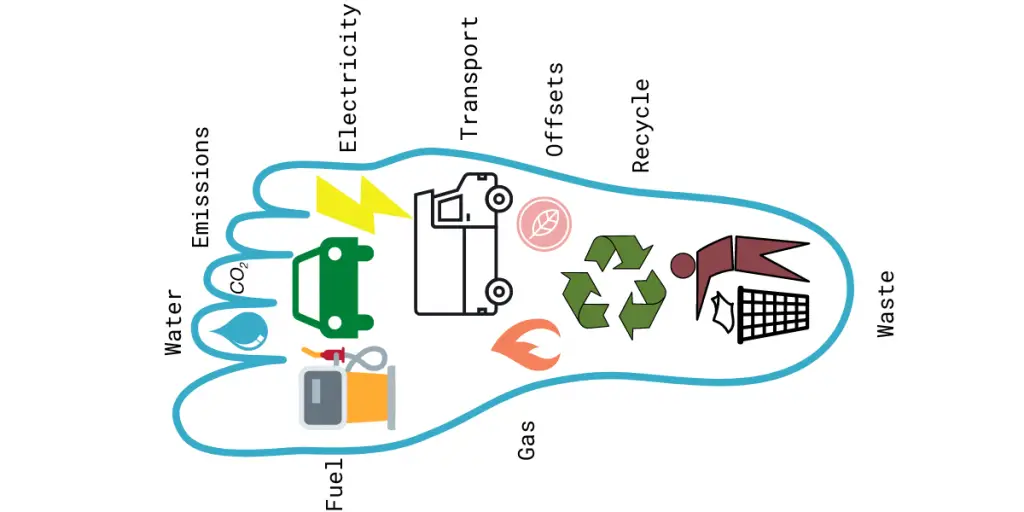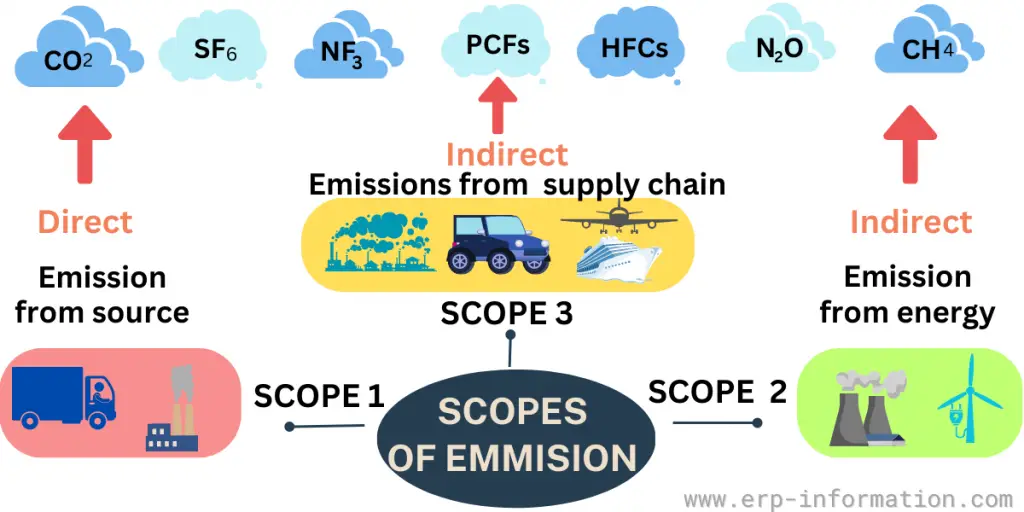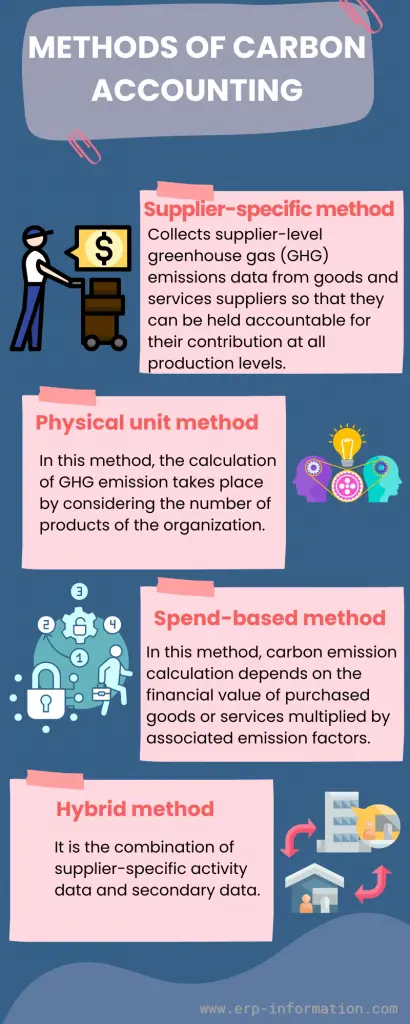No matter what we do, it seems like carbon dioxide levels in the atmosphere keep increasing. But what if we could track and account for all of the CO2 that’s being emitted? That’s where carbon accounting comes in.
By understanding where our emissions are coming from, we can start to figure out ways to reduce them. It can be done through individual or organizational efforts, and several software programs make the process easy.
This blog post covers the important concepts of carbon accounting, including ECA, scope, and methods. Let us get started.
Calculate fuel emissions effortlessly with our Emissions From Fuel Consumption Calculator Online
Evaluate carbon emission calculation using our Carbon Emission Calculator Online
Assess emissions resulting from fuel consumption with our Vehicle Emission Calculator
What is Carbon accounting?
The term “carbon accounting” refers to the activities associated with measuring, monitoring, and reporting an organization’s greenhouse gas(GHG) emissions.
What are greenhouse gases(GHG)?
Carbon accounting is a special way of tracking gases that can hurt the environment. Before you do carbon accounting, knowing what those gases are is important.
GHGs are bad gases that make the Earth too hot. We make GHGs when we burn fossil fuels, use electricity or heat, and raise animals. All these things make the Earth too hot.
There are different kinds of gases that can make the Earth hotter. Some are carbon dioxide, methane, nitrous oxide, and HFCs. To measure how much gas is being put into the air, scientists use something called CO2e.
That means they change all the gases into CO2e to make it easier to count. It is used for counting things like carbon credits and carbon offsets. All around the world, people use it to measure how much gas there is.
Importance
This is important for businesses and organizations because it provides a way to track their progress in reducing emissions and helps ensure that they are taking action to mitigate their impact on climate change.
The below points will explain to you why carbon accounting is important. And how the carbon accounting process will keep helping growing companies.
Advancement in the Regulatory Environment
Companies need to know how to count their carbon emissions. This is, so they don’t get into trouble. Banks and other financial services will also need to understand the numbers.
Some groups, like the SEC ( Securities and Exchange Commission) in the US, are making sure companies tell people how much pollution they make and what risks they have with climate change. They also must talk about other important things that affect the environment.
Comparison
You can compare what a company is doing now to what it did in the past. This will show if they are getting better or worse. You can also compare how one company is doing compared to other companies. A rating agency looks at these things when deciding an ESG score for a company.
Investment in Assets
Big companies like banks and money managers say they want to invest in things that are good for the environment. This means they will only invest in companies that work hard to reduce their pollution and help make a world with zero pollution. Companies need to understand this, or they might need more money from these big companies.
Build brand name
Companies want to stay safe and not take risks. They are counting how much carbon they use.
People, workers, and people who give money want businesses to care about the climate. Companies can show these people they care by telling them how they help the environment.
Minimizes the risk and reduces inefficiency
Keeping track of the carbon your business uses is important. You need to know how much you use so that you can find any waste or inefficiencies and fix them.
Details of Carbon Accounting
Emissions from various sources (e.g., transportation, power generation, manufacturing) are quantified and tracked over time. Reductions in emissions can be determined by comparing this data with carbon uptake estimates by forests and other ecosystems.
This data can be utilized to develop mitigation strategies that reduce GHG emissions and help stabilize the Earth’s climate.
Carbon footprint calculators, national inventories, and business environment reports are examples of carbon accounting products.
Carbon Accounting Standards
Some organizations like the World Business Council for Sustainable Development (WBCSD), World Resources Institute (WRI), the Intergovernmental Panel on Climate Change (IPCC), the Greenhouse gas protocol, and the International Organization for Standardization (ISO) provide guidelines for national greenhouse gas(GHG) inventories.
Some general guidelines for GHG emissions provided by ISO are
- Organizational greenhouse gas emissions (ISO 14064 – 1)
- Project-level greenhouse gas emissions (ISO 14064 – 2)
- The requirements for validating and verifying pertinent accountings(ISO 14064 – 3)
Carbon Footprint
What is ECA?
Enterprise Carbon Accounting (ECA) is a system for tracking and managing an organization’s carbon footprint.
It covers all aspects of an organization’s carbon emissions, including scope one emissions from company-owned sources, Scope 2 emissions from obtaining electricity, Scope 3 emissions from indirect sources, and various other sources.
ECA helps organizations set greenhouse gas reduction targets and track progress toward those goals. It can also help identify opportunities to reduce emissions and improve efficiency.
In addition, ECA can be used to report an organization’s carbon footprint to stakeholders or compliance reporting requirements.
Features of ECA
The ECA system should have the following features.
- Scalable and efficient – The system should be extendable as the company grows and provide real-time data without fail.
- Comprehensive – The system should include scope 1, scope 2, and scope three emissions.
- Standards – The system should support existing and new standards.
- Regular – The system should provide regular updates of real-time data
Advanced features of ECA
- Real-time Tracking and Monitoring:
- Enhanced ECA systems offer real-time tracking and monitoring of carbon credits throughout their lifecycle, from issuance to retirement.
- This visibility in real-time facilitates effective credit balance management, ensures regulatory compliance, and supports proactive decision-making.
- Automated Validation and Verification:
- Advanced ECA systems automate the validation and verification processes for carbon credits, reducing administrative burdens, enhancing efficiency, and minimizing errors.
- Automation contributes to maintaining credit integrity and upholding the credibility of carbon markets.
- Integrated Project Management:
- These platforms seamlessly incorporate project management tools, facilitating the seamless synchronization of project data and information regarding carbon credits. This integration streamlines operational workflows, enhances decision-making processes, and improves the tracking capabilities of ongoing projects.
- Market Data Analytics:
- Sophisticated ECA systems provide in-depth analytics of market data, covering aspects such as credit prices, trading volumes, and prevailing market trends. These valuable insights contribute to strategic decision-making, empower businesses to optimize their carbon management approaches, and enable well-informed investment decisions.
- Regulatory Compliance Tools:
- By integrating tools for regulatory compliance, advanced ECA systems guarantee adherence to dynamic carbon regulations and standards. This crucial feature aids businesses in mitigating compliance risks, upholding a positive reputation, and fostering trust among stakeholders.
Scope Emissions
Scope 1
Any organization that emits greenhouse gases (GHGs) has “Scope 1” emissions. Scope 1 emissions come directly from an organization’s operations, such as burning fuel to generate heat or power.
These emissions are under the control of the organization, so it is possible to take steps to reduce them.
For example, an organization might switch to a cleaner-burning fuel or install energy-efficiency measures. Reducing Scope 1 emissions can directly and significantly impact an organization’s carbon footprint.
Scope 2
Scope 2 emissions are indirect emissions from purchased power consumption like electricity, steam, and heat.
For example, if a factory consumes electricity from a coal-fired power plant, the Scope 2 emissions from that factory would be the emissions from the coal-fired power plant.
While Scope 2 emissions are often considered less harmful than direct emissions, they can still significantly affect the air quality and contribute to climate change.
As such, businesses and individuals need to be aware of their Scope 2 emissions and take steps to reduce them where possible.
Scope 3
Scope 3 emissions are all other indirect sources of emissions in an organization’s supply chain.
These emissions can come from things like the raw materials acquired for production, the distribution, and logistics involved in getting products to consumers, employee travel, and the consumption of goods sold by the organization.
End-of-life remediation also contributes to Scope 3 emissions. However, as organizations become more aware of their full carbon footprint, they are beginning to take steps to reduce their Scope 3 emissions.
This often includes working with suppliers to reduce emissions at source, promoting sustainable transportation options for employees, and investing in renewable energy. Organizations can significantly impact their carbon footprint by taking action on Scope 3 emissions.
Carbon Accounting Methods
The below infographics clearly explain greenhouse gas accounting methods.
- Supplier-specific method – This method Collects supplier-level greenhouse gas emissions produced from goods and services suppliers to hold them accountable for their contribution at all production levels.
- Physical unit method – In this method, the calculation of GHG emission takes place by considering the number of products of the organization.
- Spend-based method – In this method, carbon dioxide emission calculation depends on the financial value of purchased goods or services multiplied by associated emission factors.
- Hybrid method – It is the combination of supplier-specific activity data and secondary data.
FAQs
What are carbon accounting tools?
They are software applications that help organizations track and report their greenhouse gas emissions automatically. These tools can measure an organization’s emissions from energy use, transportation, waste, and other activities. Additionally, these tools can help businesses set goals for reducing their emissions and track progress over time.
Click here to get a list of the ten best carbon accounting software.
Conclusion
Carbon accounting is calculating and managing a company’s greenhouse gas emissions. By following the GHG protocol, you can successfully meet the net zero emissions. This information is then used to make better decisions about reducing emissions and becoming more environmentally friendly.
This guide covered all the essential topics on carbon accounting. We hope this is helpful to you.
Reference



